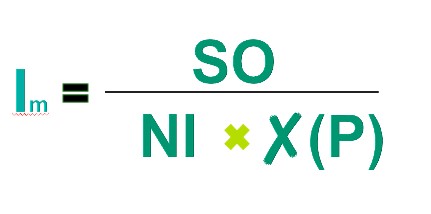Science Vs Art in facilitating learning – 2
Formula for Facilitating
This is the second blog sharing the ‘science’ side of the debate I gave at the Australian Institute of Training and Developments SA Divisional Council’s ‘Great Debate: Art Vs Science Learning Breakfast’ in December 2019.
This formula explained the nature of facilitation as a ‘science’.

Impact = Specified Outcome Over Nature of the Issue x the Number of Participants.
Let’s break the equation down and explore each element.
Impact – There is a Goldilocks relationship between STRESS and LEARNING. We don’t want too little stress, or too much stress, we want to ensure there is ‘just enough’ stress by:
- Pitching content at a level that is challenging AND within the capability of the target audience
- Providing a supportive environment where ‘failure’ is part of the experience and not feared
- Ensuring adequate food, water, light, temperature, ventilation and physical space to meet psychological needs.
- Adding ’brain breaks’ and ‘digestion moments’ for mental rest and physical activity for re-oxygenation
- Ensuring the audience can relax, laugh and interact informally.
If learning impact replaces learning efficiency as the measure, brain-friendly environments will be much more of a focus in designing impactful facilitation interactions.
Specified outcome – this focuses on building leadership bench strength, accelerating the development of high potentials, building core competencies (eg strategic thinking AND inspiring others).
Nature of the issue – this focuses on innovating content, engaging instruction, blended methods, interactive technology (methods), business alignment, robust monitoring and evaluation
Number of participants – there are a number of techniques and methods that work better with smaller or larger numbers of participants. For example, buddy coaching works well with small, focused groups working with plenty of space to ensure that there isn’t lots of overtalking. On the other hand, a’ feedforward’ coaching activity works better with a larger number of participants to provide input and collective experience.
The science of facilitating learning has benefitted over the years from research and analysis. Indeed, after decades of scientifically validated research methods, the following strategies have been robustly proven to impact education, learning, memory and recall:
Spaced practice – eg creating a schedule that spreads activity over time. Memory consolidation is supported – works better than cramming or doing ‘the few’
Interleaving – switching between topics while studying – toggling activates different parts of the brain – linked with maintaining attention and maximising brain resources
Retrieval practice – bringing learned information to mind from long term memory, eg asking a question based on previous experience and getting people to write the response activates long term memory and helps with sensemaking and consolidation
Elaboration – asking and explaining why and how things work. This helps again with sense-making, cognition and memory formation
Concrete examples – when studying abstract concepts, illustrating them with specific examples. Eg, imagine the following example to explain the peripheral nervous system: a fire alarm goes off. The sympathetic nervous system allows people to move quickly out of the building; the parasympathetic nervous system brings stress levels back down when the fire alarm turns off. A second example is sharing that micro-managing people has the same impact on the brain as people being followed down a dark alley….
Dual coding – Combining words with visuals; an example is this blog with the formula and the explanations.
All of these elements are required and validated to support the science of learning and inform how to design facilitation interventions for maximum impact.












Leave a Reply
Want to join the discussion?Feel free to contribute!